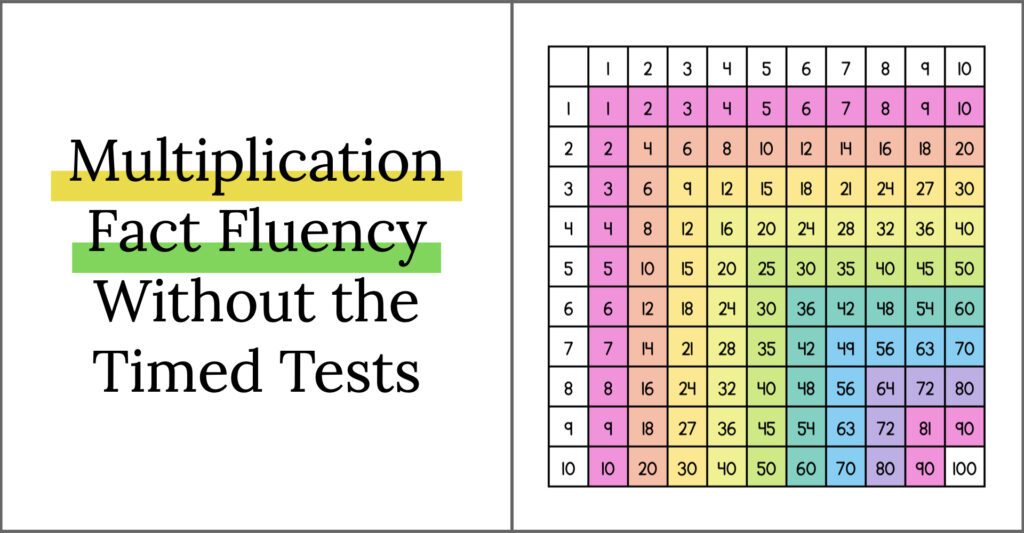
One of the questions I get asked the most is how I build fluency of multiplication facts with my students. Even more specifically, do I use timed tests? Today I want to break down my answers to these questions. I’ll share activities and strategies I use to build fact fluency, why I do not use timed tests to track student progress (and why I think they’re harmful to students), and how you can use those “drill tests” more effectively if you are required to give them in your classroom.
Timed Multiplication Tests
First, let’s talk about timed tests. I remember taking these in elementary school and I have ZERO positive memories of them. It’s not because I wasn’t good at multiplication. I was actually quite quick and always got a sticker at the top of my page, but that did very little to ease the incredible amount of anxiety that these tests created for me and my classmates.
The anxiety leading up to the tests was one thing. That feeling usually settled down shortly after the tests had been handed in and the tests were graded. However, the lasting impact on student confidence is quite another issue altogether. The thing is that rapid recall of multiplication facts is not an indicator of math intelligence. It simply means that you are able to easily memorize and regurgitate facts. However, students will often conflate the two, which can be incredibly harmful to those who struggle AND those who fly through them.
Does fluency of multiplication facts build a strong foundation for future math concepts? Of course! I just believe that there are far better ways to help build multiplication fact fluency that does not increase anxiety and decrease confidence (or create a false sense of confidence).
So what do we do instead? We look for alternatives that will strengthen their understanding and help improve student confidence, and perhaps even include a little bit of fun! (I swear it’s possible.)
Breaking Down Multiplication Facts
When you look at a multiplication chart, it can be overwhelming! I mean, there are SO MANY MULTIPLICATION FACTS to memorize. If we feel overwhelmed about teaching that many facts, imagine how students feel!
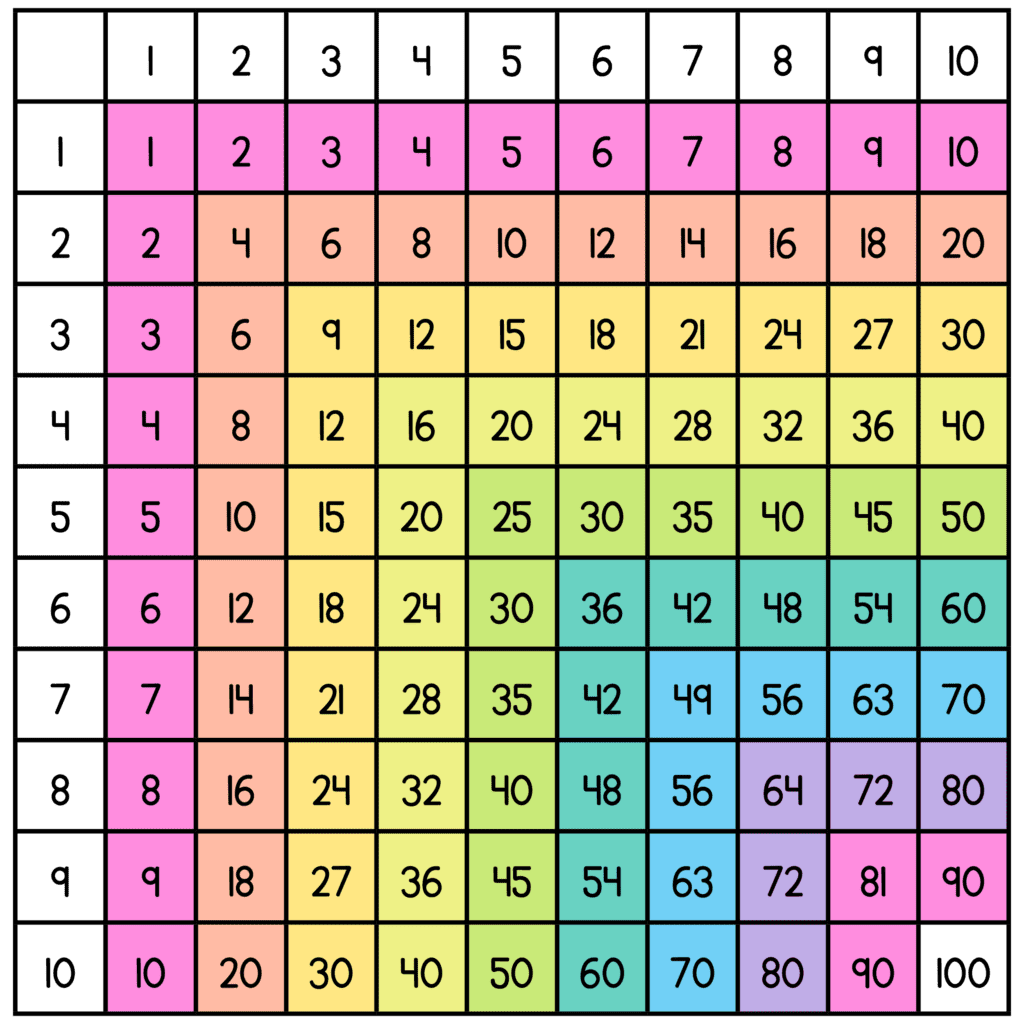
One of the first things I like to do with my students is to break down the multiplication facts on the chart. Students usually already know their one and two times tables. This is simply because students can quickly understand the identity property of one, and they typically know their addition doubles facts from first and second grade. So, I like to visually show students how many facts they already know by highlighting all of those facts.
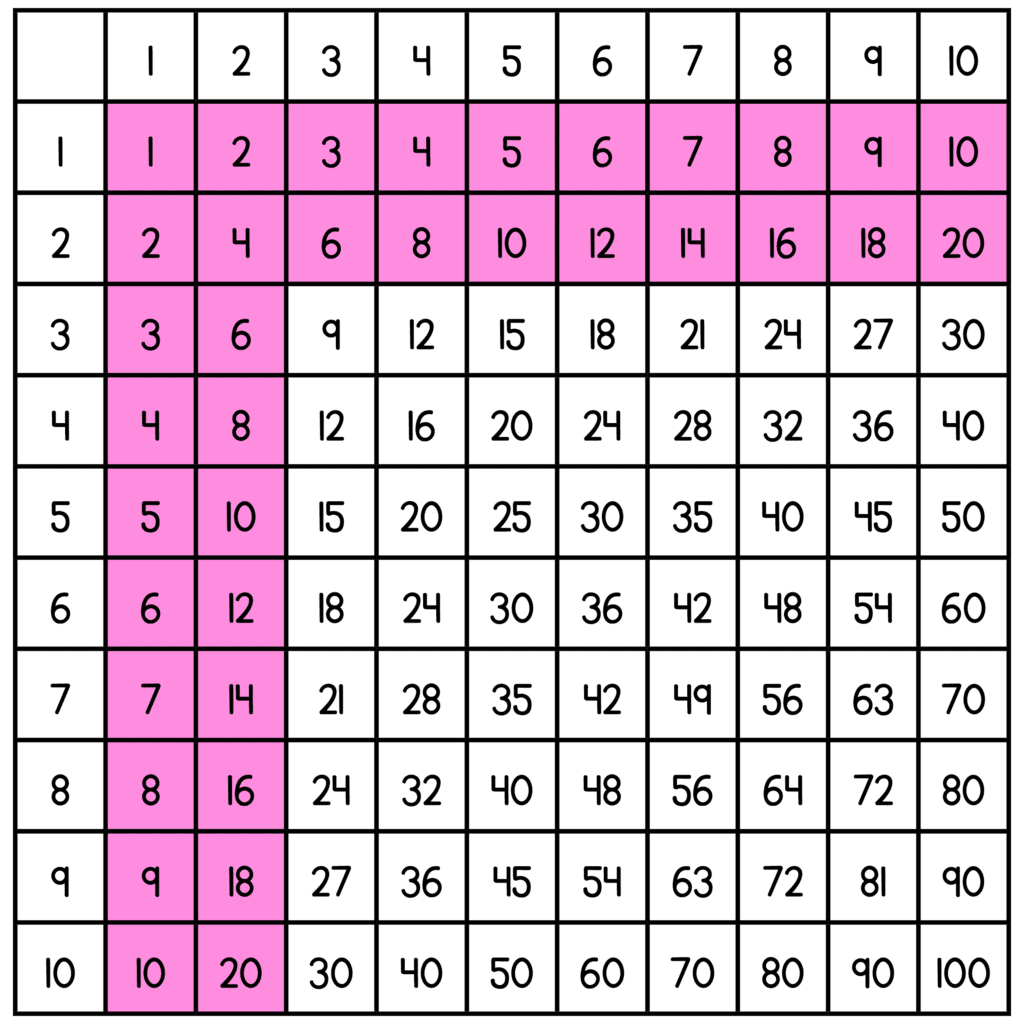
Next, we take a look at the tens and five times tables. Students are generally quick to see the patterns in tens, and can quickly skip count by fives until the facts are truly memorized. I highlight those facts as well and it’s amazing how much this visual alone can decrease student anxiety and boost confidence around multiplication. But… it gets even better.

When you help students understand the commutative property (where 4×6=6×4) and then show what that simple understanding does for their knowledge of multiplication facts, it BLOWS THEIR MINDS! Students realize that they now have only 21 facts to work on instead of a daunting 100! That feels much more manageable, doesn’t it?
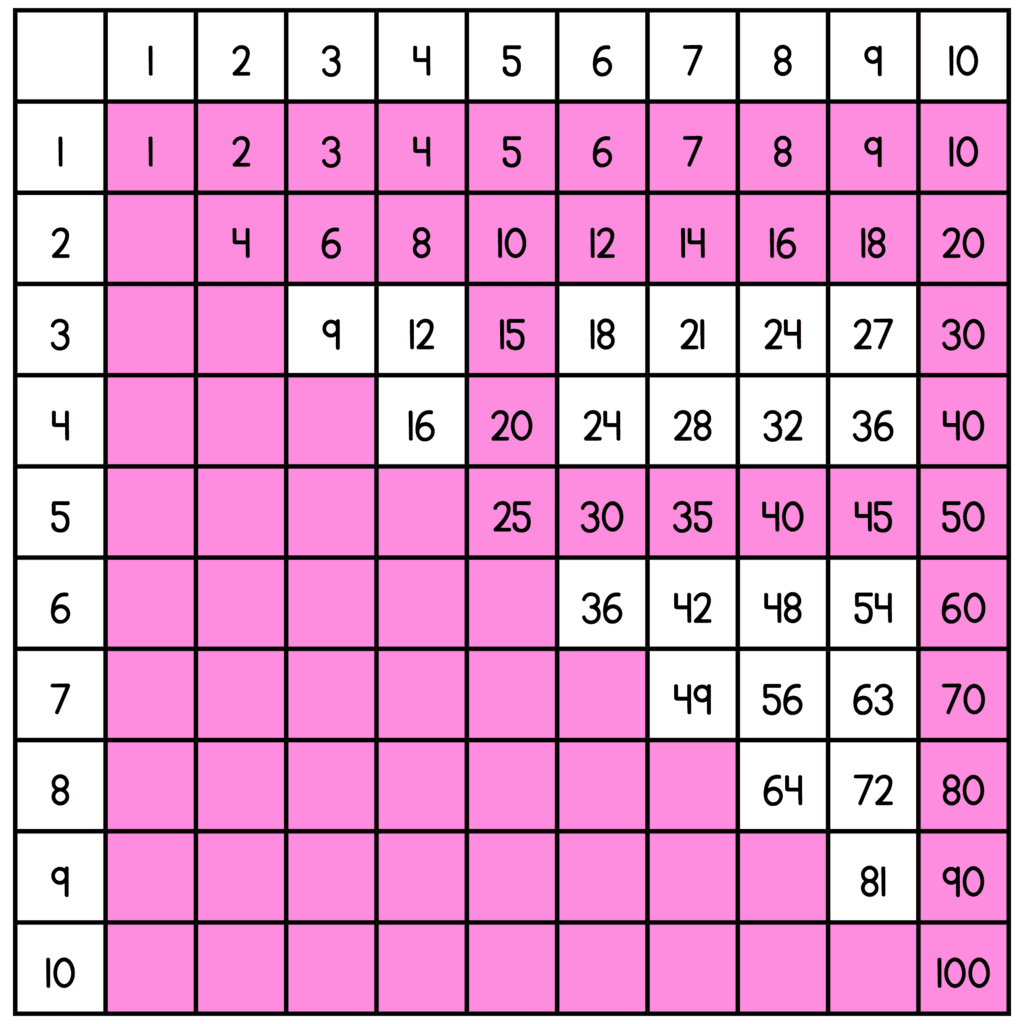
Finally, at least for me and my students, we seem to latch onto square numbers. Maybe it’s because they’re fun facts to know, or because we remember them from our work with arrays. Regardless, these products stick out and often make it into our long-term memory faster than the others.
When those become mastered multiplication facts, we are left with ONLY 15 facts to learn. We can do this!
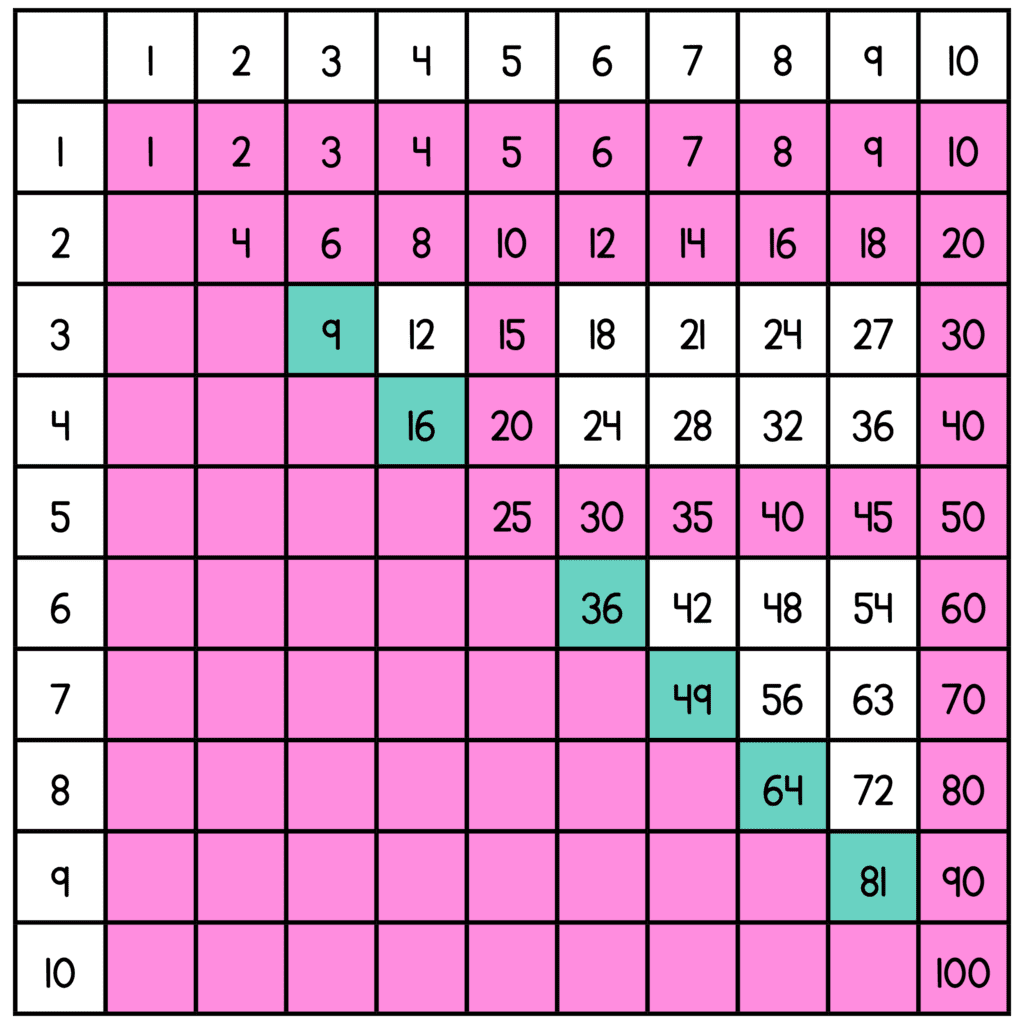
Activities to Strengthen Multiplication Fact Fluency
I have so many favorite multiplication centers that help develop multiplication fact fluency. However, there are some that you can use to target specific facts.
Multiplication Bump
Multiplication Bump is a class favorite, and so easy to differentiate. All of my students can be playing, but they each play different versions based on which facts they’re working to master. The board below shows that this pair of students would be working on multiples of four. Meanwhile, a different pair might be working on multiples of 8.
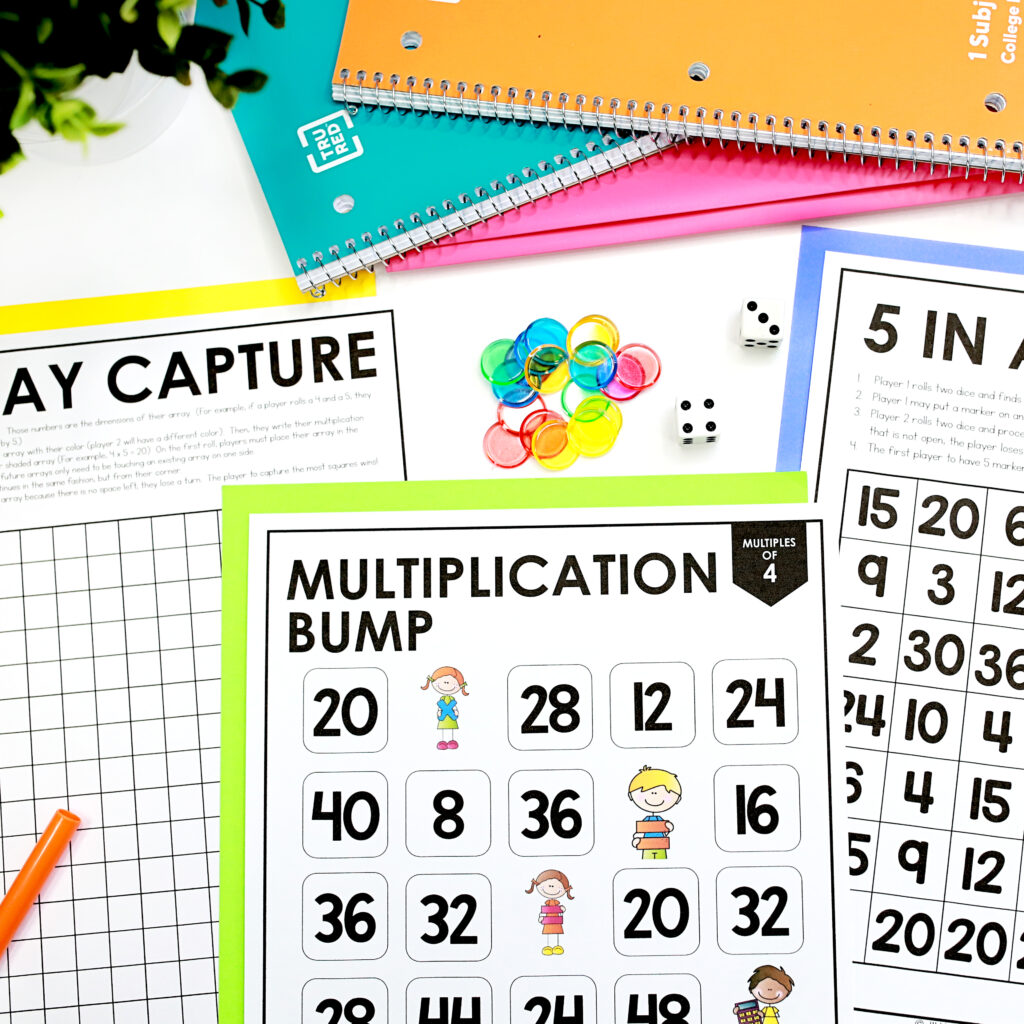
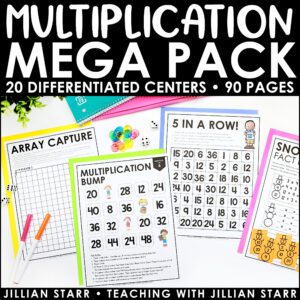
Multiplication Mega Pack
Multiplication Fact Searches
I also really enjoy having students focus on specific multiplication facts with number searches. They’re similar to word searches, but students are looking for multiplication facts instead of words. In this example, students are searching for facts that reinforce multiples of nine.

Multiplication Fact Clip Cards
I love when students are able to see possible answers and begin distinguishing which products correspond to which factors. Looking at the products first approaches the facts differently, and for some students that alone can be really helpful!
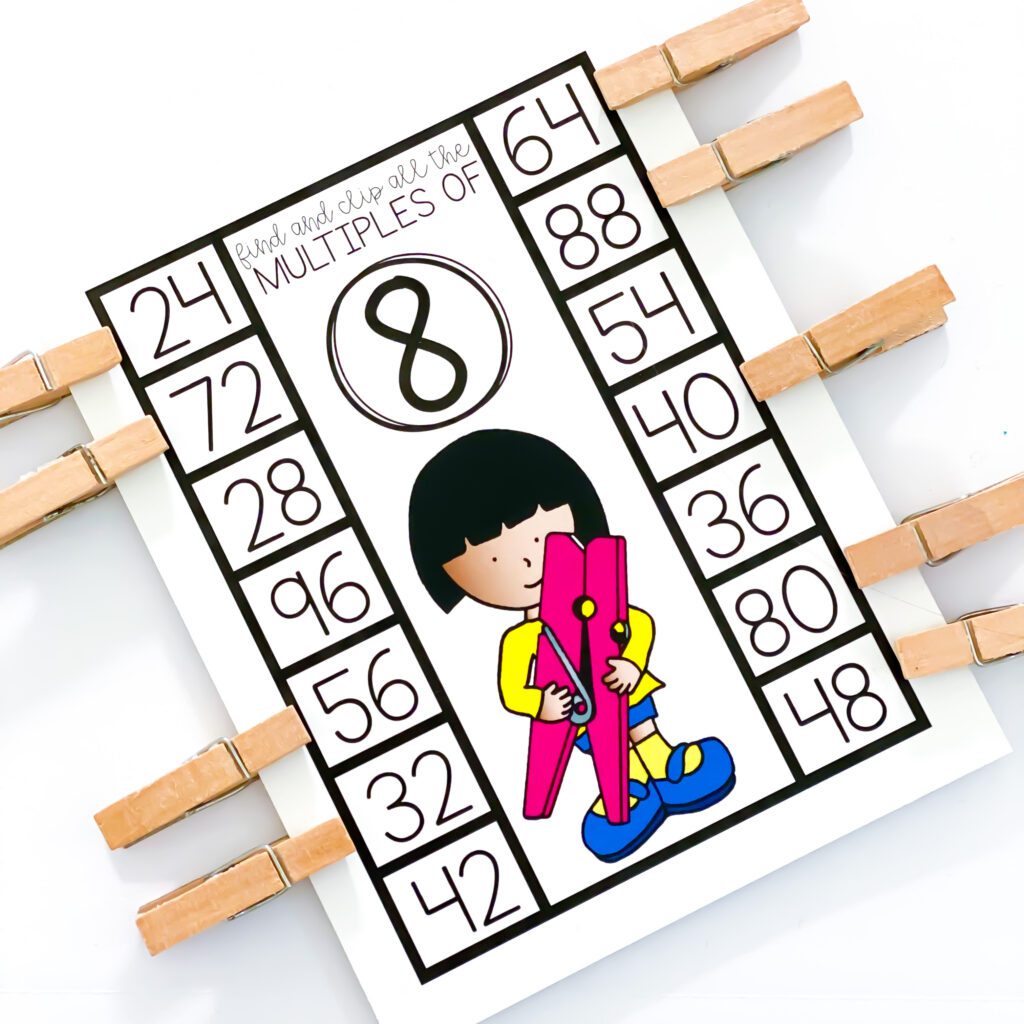
These multiplication fact clip cards are awesome (and self-correcting). You can grab them FOR FREE (along with some other multiplication center favorites) below!
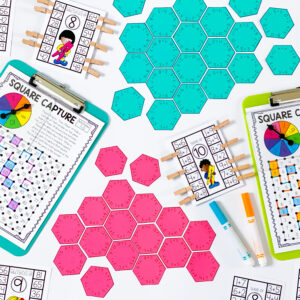
Multiplication Centers Freebie
Looking for engaging math centers to get your students practicing (and mastering) their multiplication facts? Be sure to grab this freebie!
But I *HAVE* to give Timed Tests
I understand that some teachers are not given autonomy and may be required to give timed tests, regardless of how harmful they are for students. I’ve been there too. It’s not fun. Here are my suggestions for ways to work within the system as best you can.
Continue to Advocate for Change
First, I would continue to press your administration to rethink the requirement. Explain why you believe the practice isn’t helpful, and then unintended consequences related to student anxiety and confidence. It may need to be brought up more than once, but don’t give up.
Change the Format of “Timed Tests”
Second, flip the idea of timed testing. Give five minutes for students to complete as many multiplication facts as they can. Have students raise their hand, or give a thumbs up if they are able to complete the problems in front of them before the five minutes are up. Then mark the time on your own paper, not visible to students. If students don’t finish, you congratulate them on how many they were able to complete.
Third, I would differentiate the tests. Have students work on one set of multiplication facts at a time to limit the overwhelm, and allow more focused preparation. For example, one student may be working on their multiples of three, while their peer may be working on their multiples of seven. Each student would have their own unique page of questions (which are super quick and easy to generate on a number of online websites).
You can also modify how many problems are on a page. If you notice a student is only completing ten of the thirty problems on their page, next time only put fifteen problems in front of them. Not only will this decrease their anxiety and overwhelm, but it will increase their confidence when they see the percent complete at the end of the exercise. Win/win!
Additional Tips:
I personally like having a fun math puzzle or activity on the backside of their paper so they can remain occupied for the full five minutes. This will also lessen the anxiety of the other students still working since nobody will be looking around the classroom to see who else needs to finish.
I allow students to correct their own work and track their own progress (which can double as an introduction to graphing and data collection). However, this data tracking is ONLY for the student and me to look at and discuss. Their only goal is to see if they can increase their accuracy or the number of problems they can complete. I remind them that there is no “normal” amount of problems or time that we are searching for. They are only looking to improve themselves.
I hope these strategies and ideas have helped you rethink your approach to teaching multiplication facts and how to build fluency in a way that builds student confidence. You’ve got this!

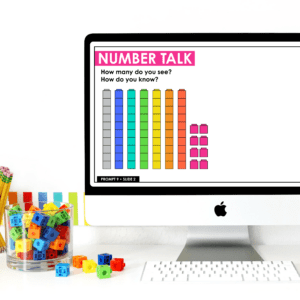
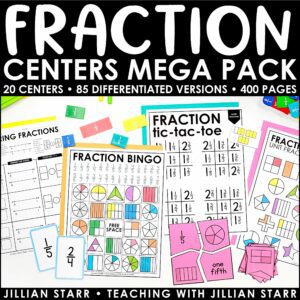
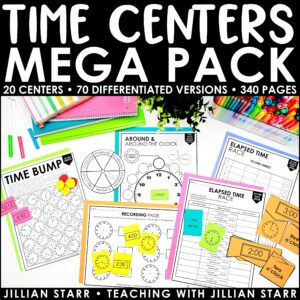
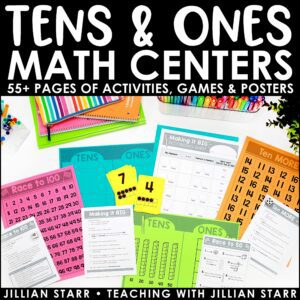
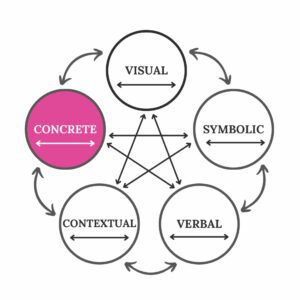

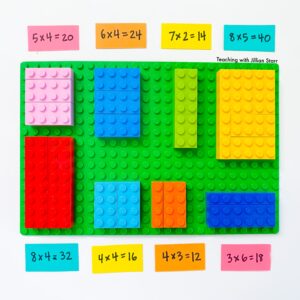


Hi Jillian,
I love these ideas – for the students and me!
I teach second grade. Could I adapt this for addition and subtraction facts using a chart and similar activities?
I’m so glad to hear it, Katie! You can definitely show students how many facts they truly know by highlighting doubles, doubles plus one, +1, and others that your students have mastered!
Wow! I LOVE the visual of the multiplication table. That’s going to blow their minds! I can’t WAIT to show this when we get back!!
Thank you, Jillian, for always tickling my math fancy. LOL